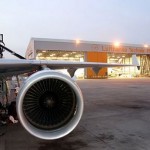NAIA-3: It’s over!
After nine years, the arbitration case between the Philippine government and the Philippine International Air Terminals Co. (Piatco) and its main-investor Fraport is finally over.
Manila International Airport Authority (MIAA) general manager Jose Angel Honrado yesterday announced that the Singapore-based International Chamber of Commerce’s (ICC) ruling in favor of the Philippine government has become final and executory.
Piatco in February 2003 filed a request for arbitration before the ICC seeking to enforce its concession agreement with the Philippine government for the construction of Ninoy Aquino International Airport Terminal 3 (NAIA-3).
The agreement authorized Piatco to build the $650-million NAIA-3 and granted a franchise to operate and maintain the terminal during the concession period of 25 years.
But the Supreme Court (SC) declared the agreement null and void for having been “amended and re-stated” without the approval of the National Economic and Development Authority (NEDA), Honrado said.
The SC said that Paircargo Consortium, the predecessor of Piatco, did not possess the requisite financial capacity when it was awarded the NAIA-3 contract and that the agreement was contrary to public policy.
Piatco sued the government before the ICC in Singapore where it sought to recover at least $565 million in damages.
Its foreign investor, Fraport, separately sued the Philippine government at the International Center for the Settlement of Investment Disputes (ICSID) in Washington.
In August 2007, the ICSID affirmed the SC’s nullification of the concessions and rejected Fraport’s claim because of its violation of the Anti-Dummy Law.
The ICC also rejected Piatco’s claim because of illegality arising from Piatco’s violation of the Anti-Dummy Law, which requires that the operation, management and control of public utilities such as the airport should remain with Filipinos.
With Piatco’s withdrawal, Honrado said the ICC award granting the Philippine government more than $6 million in arbitration cost has become final.
[Editor’s comment:] It’s good, that this almost 9 years old power-play is over. If everything runs well from now, we can expect that NAIA-3 will become fully operational.
This result should teach foreign investors, like German Fraport, to study and understand first the local business rules and laws. But this result might also teach foreign investors not to do business with the Philippines. Bahala-na!










Good, now if they can find a better way to transport domestic and international passengers from one terminal to another, it might get Manila Airport (s) out of the worst category! As it is, it can be a nightmare to make a transfer; catching a cooperative taxi after clearing customs and getting bags, hoping traffic is not too bad, security lines not too long. Allow about 3 hours, and don’t ask why this isn’t like Singapore!
Actually, if you look at them from the air, the 3 terminals are not that far apart. A tunnel under a runway with a tram running in it might do the trick.
Way too logical!
What’s your guess how long it will take to get all the airlines into the right terminals, and for the old international to become the new domestic? One year, two?